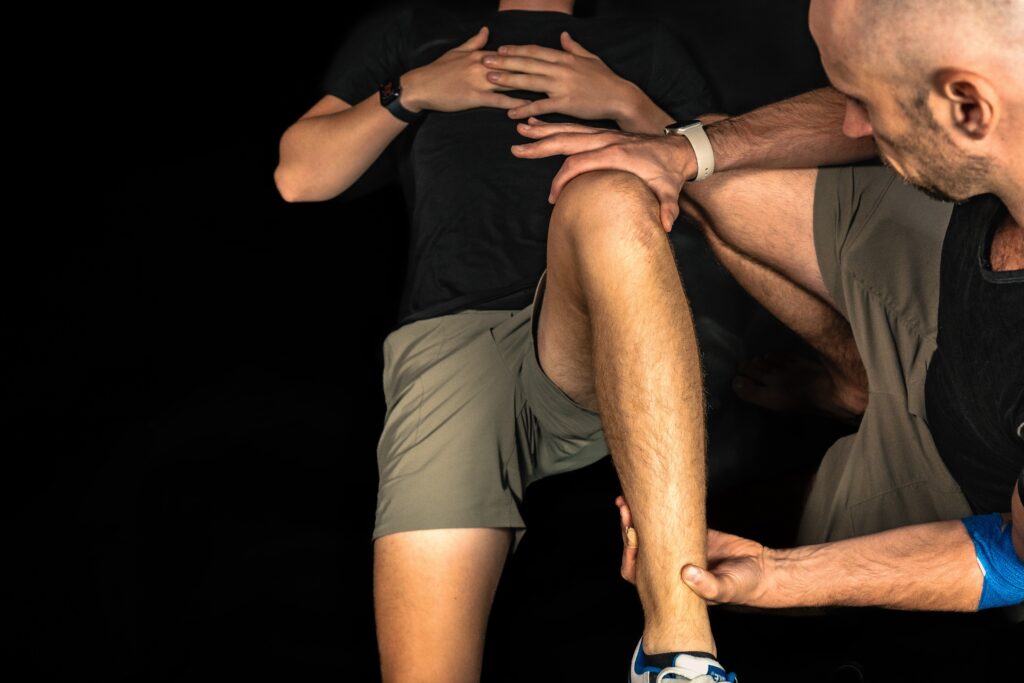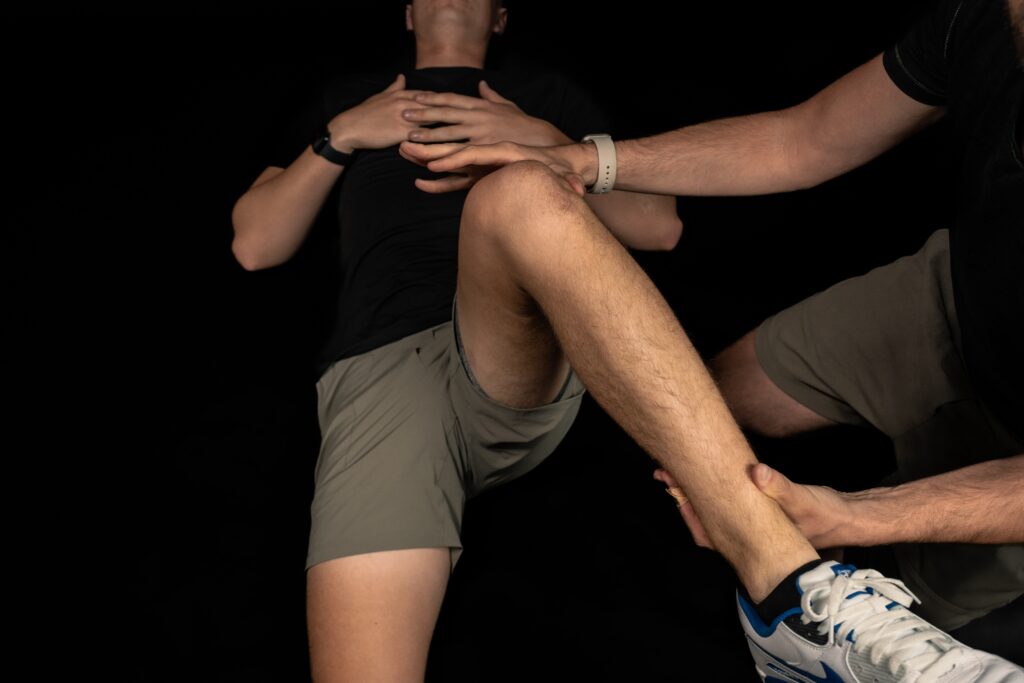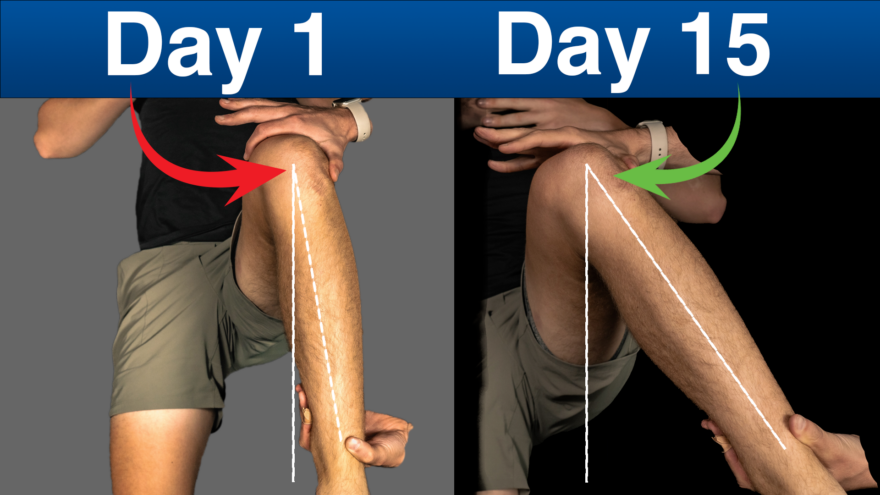Table of Contents
Unlocking Hip Internal Rotation: The Ultimate Guide
Has gaining hip internal rotation (IR) felt more like spinning your wheels than your hips? 🤔
You’re not alone. Most hip mobility drills don’t work because they lack good biomechanics principles. To gain this motion, you MUST know what actions create hip IR.
Don’t worry, I’ve got your back—or should I say, your hips!
This post breaks down hip IR biomechanics.
But that’s not all!
You’ll also get my top 4 exercises to get those hips moving like never before. Stick around till the end, and I’ll even throw in a bonus move that’ll take your hip IR to the next level.
But first, let’s get into what hip internal rotation really is.
What is Hip Internal Rotation?
Sure, hip internal rotation is the hip joint moving inward, but it’s so much more than that.
It’s essential for putting force into the ground. Limited hip IR means limited loading capabilities.
If you don’t have it? YOU GOT PROBLEMS! 😱
Reduced hip IR has been associated with:

- Low back pain (here & here)
- Hip impingement
- Abdominal strain
- ACL tear risk
You might want to find ways to improve it then! Gaining this motion requires 2 things:
- Working with ranges where IR occurs
- Force production
We access IR in the following hip flexion ranges:
- Hip Extension (to 0º)
- 60º-100º hip flexion
It is in these ranges that sacral nutation occurs. When the sacrum nutates, the acetabulum tips inward, which increases IR motion.

Within these ranges, we will apply force 2 different ways:
- Braking – slowing an eccentric phase
- Accelerating – Pushing through a concentric phase
The BEST Hip IR Exercises
1. Frog Breathing
Why it works:
Regardless of structure, the standing position requires IR and sacral nutation. This position puts force into the ground, which keeps us upright.
Many cannot access this range, especially those in a swayback posture.
This move aims to fix that, using a braking force as you resist falling down.
How to do it:
- Knees wider than hips
- Feet together, walk forward so your hips are ahead of your knees
- Triangle with your arms
- Contact points: inner knee, elbow, base of the wrist
- Silent nasal inhale, soft mouth exhale
- Apply slight downward pressure through all contact points during the exhale. Maintain pressure throughout
- Perform 5 sets of 5 breaths, twice daily for 2-4 weeks
2. Box Squat Iso Hold
Why it works:
This move works on braking in the 60º-100º range of hip flexion.
How to do it:
- Find a box or chair
- Toe out slightly
- Soften the knees
- Silent nasal inhale, soft mouth exhale
- Reach towards the ground and push your hips back
- Squat down like you are about to sit in a box.
- Think knees forward and hips back
- Perform 5 sets of 5 breaths, twice daily for 2-4 weeks
3. Quadruped Hip Shift
Why it works:
This exercise puts force into the ground in the 60º-100º range of hip flexion.
How to do it:
- Hands and knees position
- 90-degree angles at the hip joint and shoulders
- Eyes straight down
- Weight on kneecaps and entire hand
- Silent nasal inhale, soft mouth exhale
- Progressively press one knee cap and opposite hand down. This will cause the opposing arm/leg to come off the ground.
- Perform 5 sets of 5 breaths, twice daily for 2-4 weeks
4. Side Lying Stride
Why it works:
This move drives hip extension, getting you the terminal internal rotation. It’s force producing AF.
How to do it:
- Lie on your side
- Top leg parallel to the ground, knee slightly bent
- Top hand contacting the ground
- Silent nasal inhale, soft mouth exhale
- Apply pressure into the wall on the inner heel and base of the big toe
- Perform 5 sets of 5 breaths, twice daily for 2-4 weeks
5. The Finisher: Bottoms Up Split Squat Hold
This version is a bit more pitched forward, but works well.
Why it works:
This move is the ultimate test of your hip IR. It puts force in BOTH IR ranges.
Prepare to be destroyed!
How to do it:
- Start in half kneeling
- Weight on the inner heel and base of the big toe
- Silent nasal inhale, soft mouth exhale
- Get heavy on the front foot
- BARELY come off the ground
- Perform 5 sets of 5 breaths, twice daily for 2-4 weeks
Sum Up
Improving hip internal rotation is more than just a series of exercises. It’s about applying biomechanics so you have the best odds of success. Master these moves, and you’ll not only enhance your hip IR but also reduce the risk of various injuries.

To recap:
- Hip IR is a necessary movement for force production
- Work in 60º-100º and hip extension to get it
- Apply braking and accelerating forces
- Combining actions = MEGA GAINS
Now it’s common to also have rounded shoulders with limited hip IR. If that’s you, this post will help you out!
